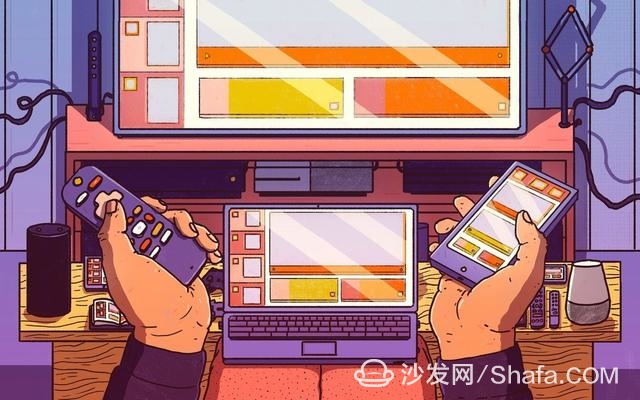
Since cable became streaming, we started watching more videos on the phone than on the couch. Under such a trend, a problem will inevitably emerge: where will television go? This article answers this question from four aspects.
First, the application is the future of television
This is a very classic point of view. Examples of this trend are the two most recent products. These two products herald a single TV program to be released as a standalone application in the future, eroding the monopoly of cable TV networks. The first is HQ Trivia, a real-time game that can be controlled by gestures. There are already 400,000 concurrent users. For a scene with friends, it is a good choice. The other is the interactive film/appliance Mosaic from Steven Soderbergh. It portrays a future in which when people watch movies, they will choose their own adventures instead of following a single script. Similarly, Netflix also launched an interactive children's program this year.
This trend has already taken place. At least from the launch of Apple TV, technical experts have been repeating this mantra.

Second, excess content is the future of television
For 2017, there were 455 serials. But this does not mean that the television content has reached its peak. Let's take a look at some statistics: Netflix will spend more than $8 billion on original programming next year; by 2022, Apple’s budget for content will reach $4.2 billion; Amazon will invest $4.5 billion.
Just as nobody wants their favorite cryptocurrency to collapse, the public needs more content.
Third, technology companies are the future of television
There is no doubt that the success of Netflix and Amazon Video will prompt other tech giants to increase their bargaining power in this regard. In the foreseeable future, Apple, Google, and Facebook will lead the third video era after broadcasting and cable TV, and make new innovations in form and content. The future TV interface may be like a huge subscription streaming service—from 500 channels to 500 streaming services.

Fourth, filter foam is the future of television
Obviously, more and more giants have joined the camp of content production, and there will be more and more content available for people to choose. People will have more and more close contact with these content or service providers.
After accumulating large amounts of personal data, the technology platform will combine these databases and algorithms to inject new insights into personalized programming. A content production model centered on individuals or small groups will emerge, which will help people eliminate a large amount of content that they are not interested in. At the same time, advanced machine learning systems will provide information for those untapped niche content streams that are specifically tailored to narrow ideology and interest maps. The consequence may be that the audience will choose to watch only programs that reinforce their narrow world view. With the support of endless hyper-individual programming, society will enter the “filter bubble†stage. â€
In the future, all televisions will be produced through the logic of the association graph, just as the tag cloud becomes a video stream. The audience of any program will be getting smaller and smaller. At the end, we will even make television programs for one audience.
Smart TV/box information can focus on smart TV information network sofa butler (http://), China's influential TV box and smart TV website, providing information, communication, TV boxes, smart TVs, smart TV software, etc. Answering questions. 65W Interchangeable Power Adapter
65W Interchangeable Power Adapter,12V5A Interchangeable Power Adapter,Interchangeable Power Adapter With Ul,12V 5Aeu Us Plug Power Adapter
Guangdong Mingxin Power Technologies Co.,Ltd. , https://www.mxpowersupply.com